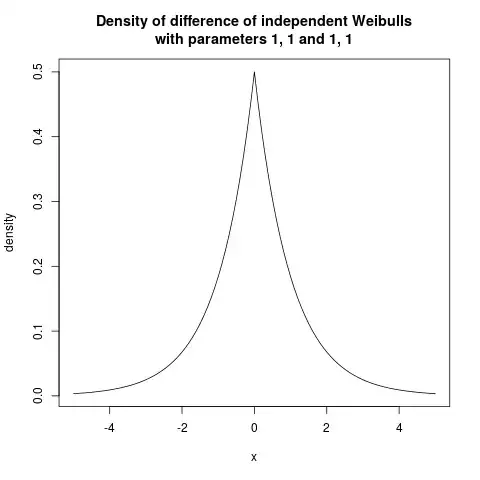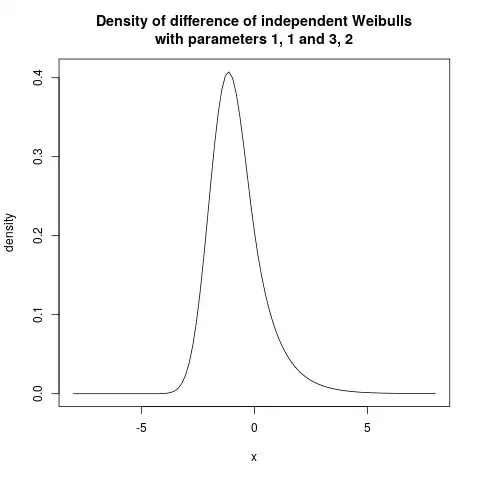How should I derive a PDF from the difference of a couple of given two parameter Weibull distributions ? The convolution integrals become very difficult to evaluate. PS : The parameters are not necessarily the same since the idea is to get a distribution for a general case.
-
please add more information to clarify your question – Antoine Jun 15 '16 at 11:49
-
Do they have the same values of their parameters or not? – whuber Jun 15 '16 at 12:13
-
Since we're considering a general case, it'll be better to assume that they do not have the same parameters. However, I don' think it'll make much difference since the convolution integral is equally difficult to compute. – Sanket Doshi Jun 15 '16 at 12:20
-
It makes a profound difference! When either both shape parameters are equal and equal to certain special values (such as $1$ or $2$), or both scale parameters are the same, a closed form answer is possible. Otherwise it does look difficult. – whuber Jun 15 '16 at 12:37
-
I am sorry. Your argument sounds correct. It looks tough to get a closed form solution in other cases. – Sanket Doshi Jun 15 '16 at 18:28
1 Answers
This seems to be a difficult question. I tried to find a closed form answer with the help of maple, but maple gives up! So I will use the same numerical approach as used in Difference of two i.i.d. lognormal random variables. The convolution formulas used are developed there, so will not be redone here. If $X, Y$ are independent weibull distributed (possibly with different parameters) then the density of $D=X-Y$ is $$ f_D(t) = \int_0^\infty f(t+y) g(y) \; dy $$ with $f$ the density of $X$, $g$ the density of $Y$.
The density of the difference $D$ can then be calculated via numerical integration:
dDIFF <- function(x, shape1, shape2=shape1, scale1=1, scale2=scale1) {
res <- x
for (xx in seq(along=x)) {
res[xx] <- integrate(function(y) dweibull(y+x[xx], shape1, scale1) * dweibull(y, shape2, scale2), lower=0.0, upper=+Inf)$value
}
return(res)
}
and we can make a plot of that, first in a symmetrical case:
(note the cusp at zero), and then an asymmetrical case:
This numerical solution is very fast and should be enough for most practical purposes! If you have to evaluate it very often, maybe make a spline approximation?
- 63,378
- 26
- 142
- 467

